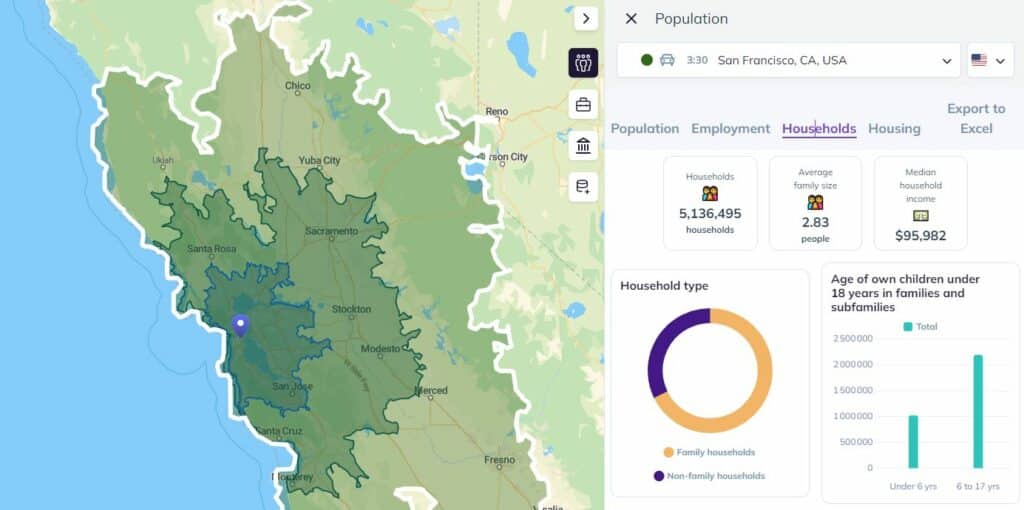What is cannibalization?
In business, the term cannibalization refers to a loss in sales or revenue caused by the competition between products or locations offered by the same organization. But it’s not always such a negative thing. Sometimes, cannibalization can be an important part of a marketing or business strategy. It’s only when cannibalization isn’t part of a pre-determined plan that it becomes dangerous for your bottom line.
Cannibalization in marketing strategy
Sometimes, cannibalization is a key part of your marketing strategy. Other times, it’s an inevitable part of doing business
Usually, conversations around cannibalization will start when a new product or service is being planned. That’s when marketers and business strategists will be brought in to figure out a few things:
- Does the new product or service cannibalize an existing offering?
- Can this cannibalization be an asset?
- Should the offering be revised to avoid cannibalization?
Even if a new product or service cannibalizes an existing one, it can help an organization capture more market share or even take sales away from a competitor. That’s why it’s sometimes done on purpose.
Cannibalization in retail
Let’s look at how cannibalization can be part of a broader plan in the retail sector — and how it can make things go wrong if it isn’t.
Ecommerce
You’ll be hard-pressed to find a retail business that doesn’t engage in at least a bit of ecommerce nowadays. But did you know that this is a form of cannibalization? After all, a brick-and-mortar store that offers an online platform is intentionally sacrificing some in-person sales for online sales. But this is often a worthwhile tradeoff, since these businesses can capture sales from people who might never visit their store otherwise. By accepting some losses in their physical store, a retail outlet can potentially make more revenue selling things online, resulting in a net positive for their bottom line.
Brick-and-mortar
It’s not just the tension between online and in-store sales that can lead to cannibalization; competition between products and locations can do this too.
On the product side, a brick-and-mortar store is essentially cannibalizing its own sales whenever it offers discounts and other special offers. Think of a hardware store that sells three brands of power tools: Byori, Raftsman, and Dack+Blecker. If this store runs a promotion where all Byori tools are 50% off, they’re cannibalizing sales of the other two brands. After all, if the three brands offer a similar drill, most customers will buy the one that’s 50% off rather than the other two. But the store owner anticipates this and hopes that the discount brings in more sales of the Byori tools than it is taking away from the other two brands.
Another way organizations can cannibalize their own sales? Locations that are too close together. When a brand like McDonald’s chooses a spot for a new location, they’ll usually do a ton of market research, which involves ensuring that a new McDonald’s isn’t going to compete with existing locations. This is usually a net negative since too much overlap means the two locations aren’t capturing as much of the market.
How to measure cannibalization
There are two main ways you can measure cannibalization. You can either use a formula to measure your cannibalization rate or use a locational intelligence tool like Smappen to visually represent how multiple locations — or products — cannibalize each other.
Cannibalization rate
To calculate your cannibalization rate, you’ll need two bits of data. First, you’ll want to know how many sales the product or location being cannibalized has lost. Then, get data on how many sales the new product or location has gotten over the same period. From there, just use this formula to calculate your cannibalization rate:
Cannibalization Rate = 100 x (Lost sales for old product) / (Sales of new product)
How much of a problem your cannibalization rate is will depend on the type of product or service you’re offering, as well as your current market share.
Location intelligence
Location intelligence refers to the practice of representing data on a map and using the information that gives you to make better decisions. This can often involve cross-referencing data from multiple sources and making it all work on a map. Done manually, this can take hours. But with a tool like Smappen, it takes a fraction of the time.
Smappen lets you create interactive maps to measure everything from coverage areas to delivery ranges and cannibalization.
Plug the addresses for two — or more! — of locations into Smappen, map out your coverage areas, and watch as Smappen automatically creates a map showing you the overlap between these areas.
With a map like this, you can plan out future locations to limit cannibalization, find out if you should renew commercial leases, and even check in on the competition.
How to avoid cannibalization
So let’s say cannibalization isn’t part of your marketing strategy. Now that you know how to calculate it, let’s dive into some ways to avoid it. Here are some things to try:
- Perform proper market research before you launch anything: Whether it’s a product or service, you should be able to articulate exactly why customers need it, especially if it’s going to compete with something you already offer.
- Use market research when planning a new location: Cannibalization isn’t just for products or services. To ensure multiple locations aren’t competing with each other, use a location intelligence tool like Smappen to properly research your market.
- Keep teams and departments aligned: Whether you’re running a small team or a large organization, it’s easy for things to fall through the cracks. But when you’re launching a product or service, you should know exactly who to talk to so you’re not accidentally cannibalizing another offering.
- Offer unique advantages in competing services: If you’re going to deal with a bit of cannibalization, you might need to do more work to differentiate them. A brick-and-mortar store that wants to offer an ecommerce option, for example, needs ways to make their in-store experience different enough from the online version.
No more cannibalization
While it sounds like it’s always negative, cannibalization can often be a crucial part of your marketing strategy. Just plan ahead and make sure the juice is worth the squeeze. Potentially, you can sacrifice a small amount of sales for one product to capture a larger slice of the market. But if you need to avoid cannibalization, make sure to do your research and use the right tools.


